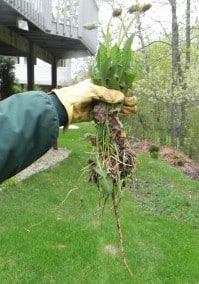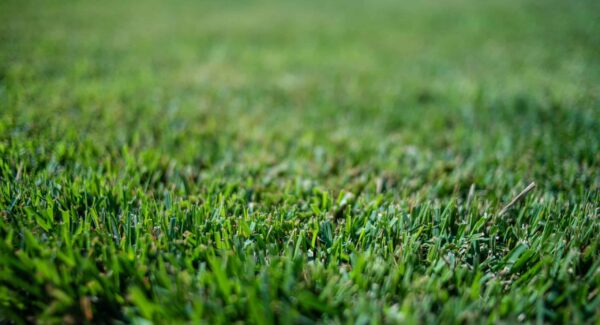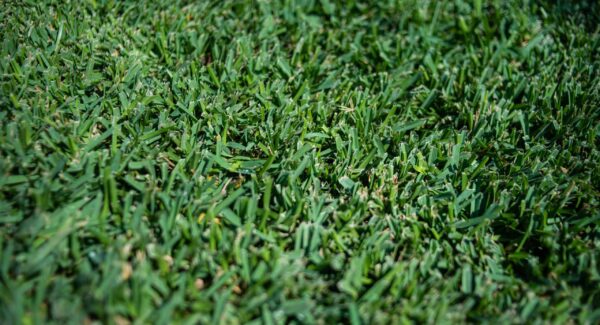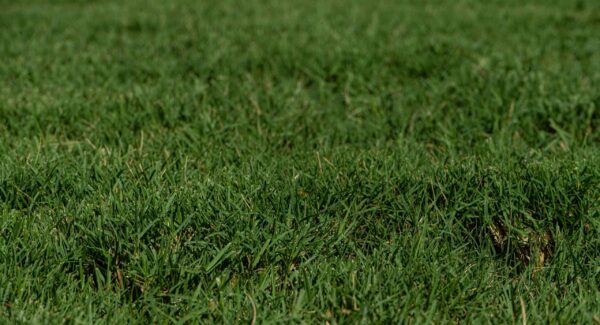How to Get Rid of Dandelions in Your Yard: Effective Removal Strategies
Those bright yellow flowers popping up across your lawn might look cheerful, but dandelions can quickly transform from a few scattered blooms to a full-blown invasion. Every homeowner has probably battled these persistent weeds at some point. Dandelions spread with remarkable efficiency thanks to their feathery seed heads that can travel for miles on a gentle breeze.
The frustration with dandelions comes from their stubborn nature. You pull one out, and three more seem to appear overnight. Their deep taproots make complete dandelion removal challenging, as any fragment left behind can regenerate into a new plant. A single dandelion can produce up to 15,000 seeds yearly, which explains why they spread rapidly across neighborhoods.
Your lawn deserves better than to be overtaken by these persistent weeds. A proactive approach to lawn care offers the best defense against dandelion control. Let’s explore effective strategies to reclaim your yard from these yellow invaders.
Understanding Dandelions
What Are Dandelions?

Dandelions (Taraxacum officinale) belong to the daisy family and grow in almost any soil condition. These perennial weeds feature distinctive toothed leaves that form a rosette at ground level. The hollow stems contain a milky white sap and can grow up to 12 inches tall. They are topped with bright yellow flowers that eventually transform into the familiar puffy white seed heads.
The life cycle of dandelions makes them exceptionally resilient. They first appear in early spring, often among the first plants to flower. The yellow blooms quickly develop into seed heads, which disperse with the slightest breeze. The plants can flower multiple times throughout the growing season, ensuring continuous reproduction.
The taproot system presents the biggest challenge for dandelion removal. These roots commonly extend 6 to 18 inches deep but can grow even deeper in loose soil. The taproot stores nutrients that allow the plant to regenerate even after removing the top growth. Any small piece of root left in the soil can produce a new plant, making complete eradication difficult.
Why Are Dandelions a Problem in Lawns?
Dandelions compete directly with your grass for essential resources. Their broad leaves create shade that prevents sunlight from reaching your lawn grass. The deep taproots efficiently draw water and nutrients from the soil, often outcompeting your turf grass. This competition weakens your lawn over time, creating thin patches where more weeds can be established.
The rapid growth rate of dandelions allows them to take over weak or thin areas of your lawn quickly. Their ability to thrive in poor soil conditions means they often flourish in areas where grass struggles. Each dandelion plant can spread its seeds over a large area, leading to new infestations across your yard and potentially into neighboring properties.
Beyond their competitive nature, dandelions disrupt the uniform appearance of a well-maintained lawn. The irregular growth pattern and bright yellow flowers create an uneven look that many homeowners find undesirable. While some people appreciate dandelions for their benefits to pollinators, most lawn enthusiasts prefer a cohesive, weed-free turf.
How to Get Rid of Dandelions

1. Manual Removal (Best for Small Infestations)
Hand-Pulling Techniques
Manual dandelion removal works best for more minor infestations and provides immediate results. The key to success lies in removing the entire taproot. The best time to pull dandelions occurs after a good rain when the soil remains soft and moist. This soil condition allows for easier extraction of the complete root system.
Specialized dandelion weeding tools make the job much easier. These tools typically feature a forked end or narrow blade you insert into the soil alongside the taproot. The design allows you to loosen the soil around the root and leave the entire plant intact. Standard options include the dandelion digger, fishtail weeder, or stand-up weed puller that prevents back strain.
Follow these steps for effective hand removal:
- Water the area thoroughly if the ground feels dry
- Position your weeding tool at the base of the plant, angled slightly toward the center of the dandelion
- Push the tool deep into the soil alongside the root (aim for at least 4-6 inches)
- Lever the tool to loosen the soil and bring the root to the surface
- Pull the plant gently but firmly to extract the entire root
Inspect each extracted root to ensure no pieces broke off in the soil. Fill holes with soil to prevent new weed seeds from settling in the space. The removed dandelions should go in your trash rather than a compost pile, as the roots can continue growing in many compost environments.
Mowing Strategies
Mowing alone won’t eliminate established dandelions from your yard. Dandelions grow from a basal rosette at ground level, which sits below the height of most mower blades. However, regular mowing prevents the plants from producing seed heads, which limits their spread across your lawn.
The height you mow impacts your lawn’s ability to compete with dandelions. Set your mower at 3 to 4 inches for warm-season grasses like Zoysia and St. Augustine. This height allows your grass to develop deeper roots and shade the soil surface, which prevents dandelion seeds from germinating. The denser your turf grows, the fewer opportunities dandelions have to establish.
2. Chemical Control (Best for Large Infestations)
Selective Herbicides
For widespread dandelion problems, selective herbicides offer an efficient solution. These products target broadleaf weeds like dandelions without harming your lawn grass. Most selective herbicides contain active ingredients such as 2,4-D, dicamba, or MCPP, which disrupt growth processes specific to broadleaf plants.
The timing of herbicide application significantly affects its effectiveness. Apply these products when:
- Dandelions actively grow (spring or fall)
- Temperatures range between 60-85°F
- No rain appears in the forecast for at least 24 hours
- Wind remains calm to prevent drift onto desirable plants
Liquid herbicides typically provide better results than granular products because they stick to the dandelion leaves. Many come in ready-to-use formulations with built-in sprayers for easy application. Always read and follow the product label directions carefully, as application rates and safety precautions vary between products.
For particularly stubborn dandelions, spot treatment works better than broadcast application. This approach allows you to apply the herbicide directly to individual plants, reducing the chemicals used in your yard. For complete dandelion control of established plants, you might need multiple applications spaced 2-3 weeks apart.
Pre-Emergent Herbicides
While most dandelion control focuses on established plants, pre-emergent herbicides help prevent new seeds from developing into plants. These products create a barrier in the soil that stops seed germination. Pre-emergents won’t affect existing dandelions but can significantly reduce new infestations.
Apply pre-emergent herbicides in early spring before soil temperatures reach 55°F. This timing prevents dandelion seeds from germinating as temperatures warm. A second application in the fall provides additional protection against seeds that blow into your yard during the summer months.
Most pre-emergent products require water activation, so plan to water your lawn lightly after application. Depending on the specific product and environmental conditions, the effectiveness typically lasts 2-3 months. Remember that these products also prevent grass seed germination.
Organic Herbicide Options
Natural dandelion control methods appeal to many homeowners concerned about chemical use. Vinegar-based herbicides contain acetic acid that burns plant foliage on contact. These products work best on young dandelions with small root systems. Commercial horticultural vinegar (20% acetic acid) works more effectively than household vinegar (5% acetic acid).
Other organic options include:
- Boiling water poured directly on the crown of the plant
- Salt solutions (though these can damage soil quality)
- Corn gluten meal as a natural pre-emergent
- Clove oil-based herbicides
The effectiveness of organic methods varies considerably. Most require more frequent application than synthetic options and work best on young plants. Be aware that non-selective organic herbicides can damage any plant they contact, including lawn grass. Always spot-treat carefully to avoid collateral damage.
3. Preventing Future Dandelion Growth
Maintaining a Healthy Lawn
The best defense against dandelions lies in a thick, healthy lawn that outcompetes weed seedlings for space and resources. Proper lawn maintenance creates conditions that favor grass over weeds. Dense turf shades the soil surface, preventing dandelion seeds from receiving the sunlight they need to germinate.
Your lawn care routine should include:
- Regular fertilization based on your grass type and soil needs
- Proper watering (deep and infrequent rather than frequent light watering)
- Regular mowing at the correct height for your grass species
- Addressing bare spots quickly before weeds can establish
Spring serves as the ideal time for lawn renovation and strengthening. Warm-season grasses establish robust root systems during this period, which improves their competitive edge against spring dandelions. Apply a slow-release fertilizer in the fall to help your lawn store nutrients for spring growth.
Soil Health & Aeration
Compacted soil creates favorable conditions for dandelions, which thrive where grass struggles. Their strong taproots penetrate compacted layers that grass roots cannot. Core aeration removes small plugs of soil from your lawn, relieving compaction and allowing air, water, and nutrients to reach grass roots more effectively.
If your lawn has heavy clay soil or high foot traffic, aerate it annually. Spring and fall are ideal times for this service.
Soil pH significantly affects your lawn’s ability to utilize nutrients and compete with weeds. Dandelions tolerate a wide pH range (from 4.5 to 8.0), while most lawn grasses prefer slightly acidic soil (6.0 to 7.0). Test your soil pH every 2 years and amend as needed with lime to raise pH or sulfur to lower it.
Overseeding
Thin areas in your lawn provide prime real estate for dandelion establishment. Plugging in new sod pieces introduces new grass plants to fill these spaces before weeds can take hold. The process involves planting grass pieces into bare spots on your lawn to increase turf density without starting over from scratch.
Are Dandelions Ever Beneficial?
While most homeowners focus on dandelion removal, these plants offer ecological benefits. The early spring flowers provide essential nectar for bees and other pollinators when few other food sources exist. The deep taproots help break up compacted soil and bring nutrients from deep soil layers to the surface.
Some homeowners choose to maintain dandelion-free zones in primary lawn areas while allowing them to grow in natural or wild areas of their property. This balanced approach supports pollinators while retaining an attractive main lawn. If you keep some dandelions, remove the seed heads before they disperse to prevent spread to areas where you don’t want them.
The leaves and flowers are edible for humans and rich in vitamins A and C. Young dandelion greens add a peppery flavor to salads, and the flowers can be made into wine or tea. If you plan to eat dandelions, ensure they haven’t been treated with chemicals and are harvested from areas free from pet waste or pollution.
Final Thoughts
Effective dandelion control requires a multi-faceted approach tailored to your specific situation. Manual removal offers an immediate and environmentally friendly solution for small numbers of dandelions. Larger infestations may require herbicide treatment and improved lawn care practices to prevent recurrence.
Remember these key points for successful dandelion management:
- Remove the entire root during manual dandelion removal
- Apply herbicides when dandelions actively grow in spring or fall
- Maintain proper mowing height to strengthen your lawn’s competitiveness
- Overseed thin areas to prevent dandelion establishment
- Improve soil conditions through aeration and proper pH management
Most importantly, consistent lawn care practices prevent dandelions from gaining a foothold in the first place. A dense, healthy lawn naturally resists weed invasion through competition for space, light, and nutrients. The effort you invest in proper lawn maintenance saves time and money on weed control in the long run.
With persistence and the right combination of techniques, you can effectively eliminate dandelions in your yard and enjoy a lush, weed-free lawn. The occasional dandelion may still appear, but prompt attention prevents them from spreading and reestablishing across your property. Your neighbors will appreciate your diligence, too, as fewer dandelion seeds blow into their yards!
Quality grass provides the foundation for a dandelion-resistant lawn. Consider installing fresh sod in problem areas where dandelions consistently return despite your best efforts. The instant thick turf creates immediate competition that prevents new dandelion establishment while you address any underlying soil or maintenance issues.





